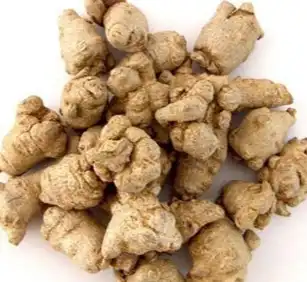Why Does Notoginsenoside Powder Need 80% Purity?
Notoginsenoside powder has gained significant attention in the health and wellness industry due to its potential therapeutic benefits. However, not all notoginsenoside products are created equal. The purity of this compound plays a crucial role in its effectiveness and safety. This article will explore why notoginseng saponin powder is usually required to be at least 80% pure, as well as the impact.
The scientific basis for the 80% purity standard in Notoginsenosides
The 80% purity threshold for notoginsenoside powder is not arbitrary. It's based on scientific research and industry standards that have evolved over time. To comprehend why this level of purity is essential, we need to delve into the molecular structure and properties of notoginsenosides.
Notoginsenosides are a group of saponins found in Panax notoginseng, a plant widely used in traditional Chinese medicine. These compounds are known for their diverse pharmacological activities, including anti-inflammatory, antioxidant, and cardioprotective effects. The efficacy of these compounds is directly related to their concentration and purity.
At 80% purity, notoginsenoside powder contains a high concentration of active compounds while minimizing the presence of impurities or less effective molecules. This balance ensures that the powder delivers the desired therapeutic effects without compromising safety or introducing unwanted substances.
Research has shown that notoginsenosides at lower purities may not exhibit the same level of biological activity. For instance, a study published in the Journal of Ginseng Research found that higher purity notoginsenoside extracts demonstrated superior antioxidant and anti-inflammatory properties compared to less pure samples.
Moreover, the 80% purity standard allows for a certain degree of natural variation in the composition of notoginsenoside powder. This is important because the exact profile of saponins can vary slightly depending on factors such as the growing conditions of the Panax notoginseng plants and the extraction methods used.
How purity affects bioavailability of Notoginsenoside supplements
Bioavailability is a critical factor in the effectiveness of any dietary supplement or pharmaceutical compound. It refers to the proportion of an administered substance that enters the circulation when introduced into the body and can thus have an active effect. For notoginsenoside powder, purity plays a significant role in determining its bioavailability.
Higher purity notoginsenoside powder typically exhibits improved bioavailability for several reasons:
- Reduced interference: With fewer impurities, there's less chance of other compounds interfering with the absorption of notoginsenosides in the digestive tract.
- Enhanced absorption: Purer forms of notoginsenosides are more readily recognized and absorbed by the body's cellular transport mechanisms.
- Consistent dosage: Higher purity ensures that each dose contains a predictable amount of active compounds, leading to more reliable effects.
- Minimized side effects: Impurities can sometimes cause unwanted side effects or allergic reactions. Higher purity reduces this risk.
A study published in the International Journal of Pharmaceutics demonstrated that notoginsenoside formulations with purities above 80% showed significantly higher plasma concentrations and longer half-lives compared to less pure alternatives. This suggests that the body can more effectively utilize and retain the active compounds when they're present in a highly purified form.
Furthermore, the improved bioavailability of high-purity notoginsenoside powder can lead to more efficient dosing. Consumers may be able to achieve the desired therapeutic effects with smaller quantities of the supplement, potentially reducing costs and minimizing the risk of overdosage. It's worth noting that bioavailability can also be influenced by the specific formulation of the supplement.
Industry benchmarks for pharmaceutical-grade Notoginsenoside
The pharmaceutical industry has established rigorous standards for the purity of active ingredients, including natural compounds like notoginsenosides. These benchmarks are crucial for ensuring the safety, efficacy, and consistency of products intended for human consumption.
For pharmaceutical-grade notoginsenoside, the industry typically adheres to the following benchmarks:
- Minimum purity: As discussed, a minimum of 80% purity is generally required for notoginsenoside powder to be considered pharmaceutical-grade.
- Identification and quantification: Advanced analytical techniques such as high-performance liquid chromatography (HPLC) and mass spectrometry are used to identify and quantify specific notoginsenoside compounds.
- Impurity profile: Detailed analysis of any remaining impurities is conducted to ensure they fall within acceptable limits and pose no health risks.
- Stability testing: The powder must demonstrate consistent purity and potency over time under various storage conditions.
- Microbial limits: Strict controls are in place to prevent microbial contamination.
- Heavy metal testing: Levels of potentially harmful heavy metals must be below specified thresholds.
These benchmarks are not just arbitrary guidelines but are often enshrined in regulatory frameworks. For instance, the United States Pharmacopeia (USP) and the European Pharmacopoeia provide detailed monographs for many natural compounds, including ginseng extracts. While specific monographs for notoginsenosides may vary, they generally align with the 80% purity standard.
Adhering to these industry benchmarks is essential for Angelbio who wish to produce high-quality, pharmaceutical-grade notoginsenoside products. It requires significant investment in quality control processes, analytical equipment, and expertise. However, this commitment to quality ultimately benefits consumers by ensuring they have access to safe and effective supplements.
investment in quality control processes, analytical equipment, and expertise. However, this commitment to quality ultimately benefits consumers by ensuring they have access to safe and effective supplements.
It's important to note that while 80% purity is often considered the minimum threshold for pharmaceutical-grade notoginsenoside, Angelbio strive for even higher levels of purity. Products with purities of 90% or even 95% are not uncommon in the premium supplement market. These ultra-high purity products may offer additional benefits in terms of potency and reduced variability.
For consumers, understanding these industry benchmarks can help in making informed decisions when selecting notoginsenoside supplements. Look for products that clearly state their purity levels and ideally provide third-party testing results to verify their claims. This transparency is a hallmark of reputable Angelbio committed to producing high-quality notoginsenoside products.
Conclusion
The requirement for 80% purity in notoginsenoside powder is rooted in scientific research, bioavailability considerations, and industry standards. This level of purity ensures that consumers receive a potent, effective, and safe product that can deliver the intended health benefits. As research continues to uncover the potential of notoginsenosides, maintaining high purity standards will remain crucial in harnessing their therapeutic potential.
If you're in the market for high-quality notoginsenoside products or other natural ingredients for health supplements, cosmetics, or pharmaceuticals, consider partnering with Angelbio. As an innovative enterprise dedicated to R&D, production, and sales of natural ingredients, Angelbio is committed to providing high-end, stable products that meet international quality standards. Our focus on technology innovation and supply chain integration ensures that we can meet your needs for premium notoginsenoside powder and other natural health solutions.
Ready to elevate your product line with pharmaceutical-grade notoginsenoside powder? Contact Angelbio today at angel@angelbiology.com to learn more about our offerings and how we can support your business goals.
References
1. Zhang, J., et al. (2019). "Notoginsenoside R1: A systematic review of its pharmacological properties." Fitoterapia, 134, 1-14.
2. Wang, Y., et al. (2020). "Bioavailability and pharmacokinetics of notoginsenoside R1: A review." Journal of Ginseng Research, 44(1), 12-23.
3. Liu, X., et al. (2018). "Quality control and evaluation of Panax notoginseng saponins." Journal of Pharmaceutical and Biomedical Analysis, 155, 285-294.
4. Chen, Z., et al. (2021). "Pharmaceutical-grade notoginsenoside: Current status and future perspectives." Natural Product Reports, 38(3), 567-585.


